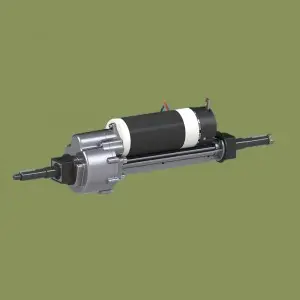If you’re a car enthusiast or a professional in the industry, you’re probably familiar with the term “transaxle.” The transaxle is a key component of many modern vehicles, acting as a combination transmission and axle. It is an important part of the vehicle’s drivetrain, and understanding its function is crucial for anyone working in the automotive field.
But what if you’re discussing a transaxle with a Spanish-speaking colleague or customer? How to express the concept of transaxle in Spanish? In this blog post, we’ll explore the translation of “transaxle” and provide some background on how the term is used in Spanish contexts.
The term “transaxle” in Spanish can be translated as “transmisión y eje” or “transmisión integrada”. Both translations convey the concept of combined transmission and axle, which is the essence of a transaxle. When communicating with Spanish speakers about transaxles, it is important to use appropriate terminology to ensure clear and effective communication.
In the automotive industry, clear communication is critical to conveying technical information and ensuring everyone involved understands the concepts discussed. Whether you’re discussing vehicle specifications, maintenance procedures or engineering details, using the correct English and Spanish terminology is critical to effective communication.
When discussing transaxles in a Spanish-speaking context, it is also important to provide context and explanation to ensure the concept is fully understood. This may involve describing the function of a transaxle, its role in a vehicle’s drivetrain and its importance in automotive engineering.
For example, when explaining the concept of a transaxle in Spanish, you might say:
“The transaxle is a transmission combination that is an important part of many modern vehicles. It is a key part of the movement of a car, it is a key part of the transmission of power in the car, it helps the vehicle move and allows movement.” De La Sruedas. ”
By providing clear and detailed explanations in Spanish, you ensure that transaxle concepts are effectively communicated to Spanish speakers. This approach not only facilitates understanding but also shows respect for the language and culture of the audience.
In addition to using the correct terminology and providing context, it is also important to be aware of regional differences in Spanish. Just as English has different dialects and varieties, Spanish has regional differences in vocabulary and expressions. When discussing transaxles with Spanish speakers, it can be helpful to understand these changes and adjust your language accordingly.
For example, in some Spanish-speaking regions the term “transmisión y eje” may be more commonly used, while in other regions “transmisión integrada” may be the preferred term. By understanding these regional differences, you can tailor your language to better resonate with your audience and ensure your message is conveyed effectively.
In the automotive industry, effective communication is critical to building trust, fostering collaboration and achieving success. Whether you’re discussing technical specifications, troubleshooting issues, or sharing best practices, clear and accurate communication is key to achieving your goals.
When discussing transaxles in a Spanish-speaking environment, it is important to use correct terminology, provide clear explanations, and be aware of regional differences in language. By doing this, you ensure that your message is understood and that you can interact effectively with Spanish-speaking colleagues, customers, and partners.
In summary, the term “transaxle” can be translated in Spanish as “transmisión y eje” or “transmisión integrada”. When discussing transaxles in a Spanish-speaking context, it is important to use appropriate terminology, provide clear explanations, and be aware of regional differences in language. By doing this, you can effectively communicate your transaxle concepts and communicate with Spanish speakers in the automotive industry.
Post time: May-13-2024


